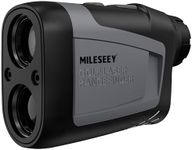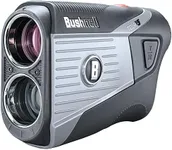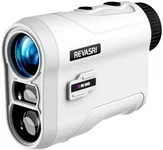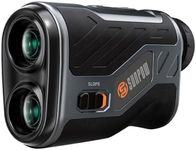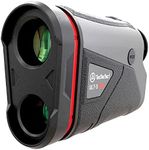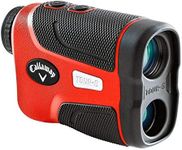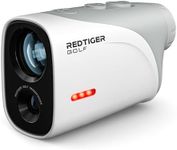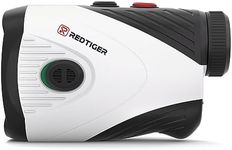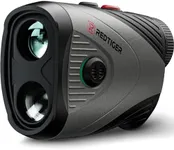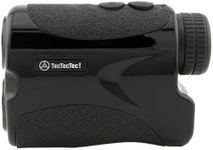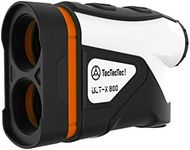Buying Guide for the Best Golf Laser Rangefinders
Choosing the right golf laser rangefinder can significantly enhance your game by providing accurate distance measurements to various points on the course. A good rangefinder will help you make informed decisions about club selection and shot strategy. When selecting a rangefinder, consider the features that will best suit your playing style and the types of courses you typically play. Understanding the key specifications will help you make an informed choice that aligns with your needs.RangeThe range of a golf laser rangefinder refers to the maximum distance it can accurately measure. This is important because it determines how far you can be from your target and still get a reliable reading. Rangefinders typically offer ranges from 400 to over 1000 yards. If you play on larger courses or want to measure distances to far-off objects, a rangefinder with a longer range is beneficial. For most golfers, a range of 600-800 yards is sufficient, but if you often play on expansive courses, consider a model with a longer range.
AccuracyAccuracy is the degree to which the rangefinder can measure the distance to a target. This is crucial for making precise shots and selecting the right club. Most rangefinders offer accuracy within one yard, which is generally adequate for most golfers. If you are a competitive player or someone who values precision, look for a rangefinder with higher accuracy, such as within half a yard. For casual players, standard accuracy is usually sufficient.
MagnificationMagnification refers to how much closer the rangefinder can make distant objects appear. This is important for clearly identifying targets, especially on courses with complex layouts or when aiming at small or distant targets. Rangefinders typically offer magnification levels from 5x to 7x. Higher magnification can be helpful for spotting targets at a distance, but it may also make the image shakier. Choose a magnification level that allows you to comfortably and clearly see your target without excessive shake.
Slope MeasurementSlope measurement is a feature that calculates the angle of elevation or decline and adjusts the distance reading accordingly. This is important for making accurate shots on hilly courses. Some rangefinders offer this feature, which can be turned on or off depending on whether you are playing a casual round or a tournament (where slope measurement is often not allowed). If you frequently play on courses with significant elevation changes, a rangefinder with slope measurement can be very beneficial.
DisplayThe display of a rangefinder shows the distance and other relevant information. A clear and easy-to-read display is important for quickly and accurately interpreting the data. Displays can be either LCD or LED, with some offering additional features like brightness adjustment or color displays. Consider a display that is easy to read in various lighting conditions, such as bright sunlight or overcast skies. If you have difficulty reading small text, look for a rangefinder with a larger or more detailed display.
Size and WeightThe size and weight of a rangefinder affect its portability and ease of use. A compact and lightweight rangefinder is easier to carry and handle during a round of golf. However, smaller models may have fewer features or a smaller display. Consider how you plan to carry the rangefinder—whether in your pocket, on a belt clip, or in your golf bag—and choose a size and weight that will be comfortable for you to manage throughout your game.
Battery LifeBattery life indicates how long the rangefinder can operate before needing a recharge or battery replacement. This is important for ensuring that your rangefinder is ready to use throughout your round. Most rangefinders use CR2 batteries, which can last for several rounds. If you play frequently or on long courses, consider a rangefinder with a longer battery life or one that offers a battery-saving mode. Always check the battery type and availability to ensure you can easily replace it when needed.

